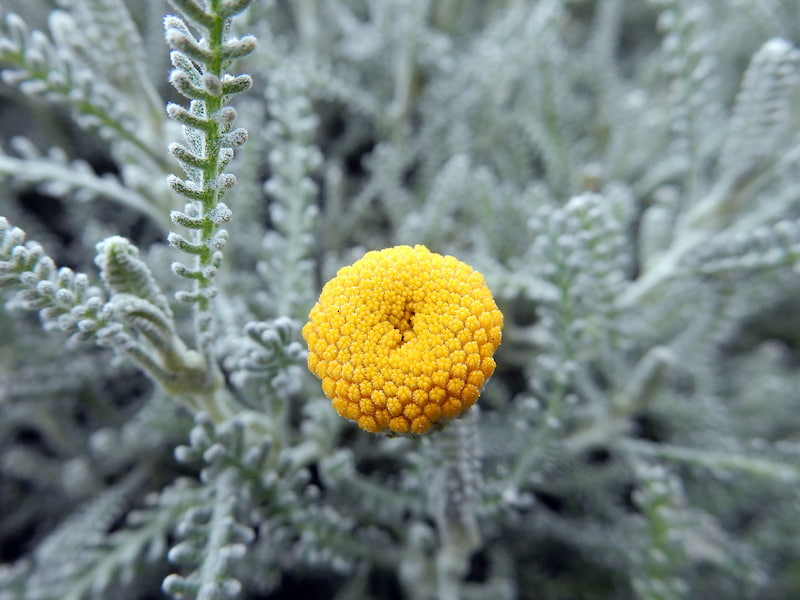A lovely plant with fine, aromatic foliage, lavender cotton (Santolina) thrives in dry gardens while remaining cold-resistant. This member of the Asteraceae family is undemanding when it comes to soil or watering. Native to the Mediterranean region, it flourishes in very poor soils and requires no special care. The silvery foliage of Santolina chamaecyparissus or the greener leaves of Santolina virens or Santolina lemon fizz beautifully adorn flower beds, rockeries, or low borders. In summer, lavender cotton is adorned with small cream or yellow flowers. However, it tends to become sparse over time. To remedy this, regular pruning is necessary—an ideal opportunity to take cuttings and refresh your border. Follow our guide to learn when and how to propagate lavender cotton.
Essential Equipment for Propagating Lavender Cotton
- A sharp, disinfected pruner for maintaining your lavender cotton.
- A secateurs for removing unnecessary leaves—also sharp and disinfected.
- An alveolate tray, a seedling box, conventional or biodegradable buckets, or terracotta pots.
- Special sowing and cutting compost.
- Sand.
- A pen.
- A spray bottle.
When to Take Lavender Cotton Cuttings?
The ideal time to take Santolina cuttings is during pruning. While lavender cotton can be pruned several times a year, the main pruning occurs at the end of summer, around September, when flowering ends.

Propagating lavender cotton is best done just after flowering
Use shears to remove spent flower heads, then trim with pruners to restore a compact, rounded shape. Don’t discard the cuttings—they’re perfect for propagation.
How to Propagate Lavender Cotton
- Gather pruned stems and select the healthiest, at least 15–20 cm long.
- Remove the lower leaves from each stem (about 10 cm) using shears.
- Trim the top cleanly to encourage sap flow.
- Fill your chosen container with a light mix of three-quarters sowing compost and one-quarter sand. Lightly moisten with a spray bottle and top with a thin layer of sand.
- Use a pen to make holes spaced 5–10 cm apart.
- Insert cuttings halfway into each hole, gently firming the soil without compacting.
- Water with a spray bottle.
In autumn, keep cuttings outdoors in partial shade, maintaining lightly moist soil. Avoid prolonged direct sunlight.
In winter, move cuttings under a cloche or cold frame in milder regions. In colder areas, place them in a conservatory. Keep the compost moist but not waterlogged to prevent rot.
Direct Propagation of Lavender Cotton
In Mediterranean climates, cuttings can be planted directly in their final location. Dig a 15–20 cm deep furrow where you want your low border. Bury prepared cuttings (with lower leaves removed) every 10 cm, fill halfway, and water generously. In spring, keep only the strongest cuttings.
When to Transplant Lavender Cotton Cuttings?
Over winter, cuttings will develop roots. Once frost risk has passed in spring, transplant them:
- Space plants 20–30 cm apart in a sunny spot with well-prepared soil.
- Dig holes with a trowel and place cuttings inside.
- Backfill soil, covering the collar slightly for bushier growth.
- Pinch tips to encourage branching.
- Water thoroughly after planting and regularly during the first year.
































Comments